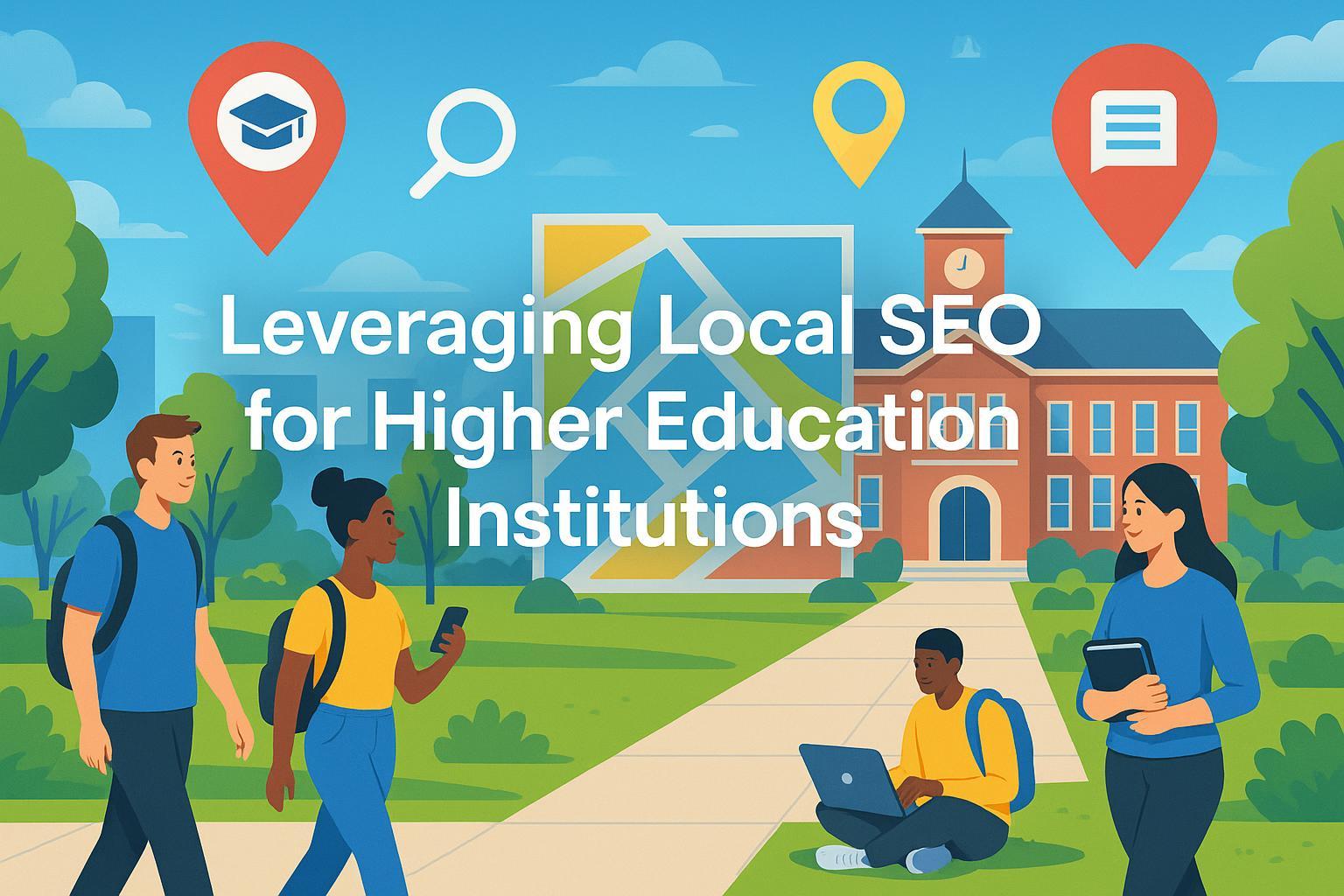Leveraging Local SEO for Higher Education Institutions: Strategies to Attract Nearby Students

Introduction: Local Students—The Critical Enrollment Opportunity
Struggling to draw more nearby students to your institution? With higher education competition intensifying, local students are often the most promising prospects for sustainable enrollment growth. Yet, even top-tier colleges frequently underperform in local search visibility—missing out as prospective students and parents turn to Google for college options, campus visit info, or program specifics close to home.
Why does this matter? According to BrightLocal’s 2025 stats, 46% of all Google searches have local intent, and 42% of searchers click on Map Pack results first. For higher education, the effect is direct: 80% of students visit institution websites using their phones, and 37% of those proceed to book campus tours or information sessions immediately after. The data is clear—mastering local SEO can be the difference between thriving enrollments and empty lecture halls.
This practical guide details 7 proven local SEO best practices, each adapted specifically for colleges and universities, complete with evidence, case studies, and step-by-step execution.
1. Claim and Optimize a Google Business Profile for Every Campus Location
Each campus or learning center must have its own unique, fully optimized Google Business Profile (GBP). Accurate NAP (Name, Address, Phone), rich descriptions, relevant photos, and frequent updates ensure you appear in the highly visible Google Map Pack.
- How: Register your institution at the Google Business Profile portal. For multi-campus colleges, create individual GBP listings. Use detailed, student-focused descriptions and upload current campus photos. Regularly update with admissions deadlines, campus events, and Q&A.
- Effect: UTI saw campus-specific organic sessions climb 75% and a year-over-year 411% rise in overall organic sessions after optimizing GBP (source: Neil Patel).
2. Ensure NAP Consistency and Build Robust Citations
Inconsistent contact details wreak havoc on local rankings. All online mentions—Google, Apple Maps, college directories, or local press—must match exactly. Use citation building and auditing tools like BrightLocal or Moz Local.
- How: Audit every listing for accuracy; align address, phone, and contact details. Monitor and update citations quarterly using automated tools. Include education-specific directories (Niche, CollegeBoard) and local partners.
- Effect: Institutions with accurate, widespread citations consistently rank in the top 3 for local intent keywords—leading to increased campus discoveries and application inquiries (BrightLocal's 2025 benchmark).
3. Develop Campus-Targeted Landing Pages with Localized Content and Schema
Each campus or major program deserves its own search-optimized, locally relevant web page. Use local keywords, campus events, nearby employer partnerships, and embed schema markup for address, events, and reviews.
- How: Use keyword tools (e.g., Google Keyword Planner) to identify local queries like “community college in [City]” or “business degree near me.” Publish specific landing pages with unique content, testimonials from local students, and dynamic event feeds.
- Effect: The University of Central Oklahoma saw a 386% jump in Google search impressions for program pages after implementing this approach (source: Carnegie Higher Ed case study).
4. Solicit and Manage Student & Alumni Reviews
Reviews boost search rankings for educational institutions just as they do for businesses. Google and prospective students weigh authentic, up-to-date feedback heavily.
- How: Proactively request reviews from recent graduates, event attendees, and current students via follow-ups and email templates. Respond to all reviews—especially critical ones—to build trust. Integrate links to review forms in post-visit communications.
- Effect: Institutions with high average ratings and recent reviews regularly outperform peers in Map Pack rankings, driving more tour bookings and applicant inquiries (Moz Local).
5. Leverage Local Link-Building via Community, Media, and Alumni Networks
Local backlinks remain one of Google’s strongest local ranking factors. Collaborate with local press, community organizations, and businesses. Leverage alumni success stories and partnerships to generate backlinks.
- How: Coordinate with local media for event coverage, sponsor youth programs, or run joint outreach with local employers who hire your graduates. Feature local success stories and link to/about your institution on their websites.
- Effect: The University of California, Davis boosted rankings and in-state applications by pursuing local PR and alumni-driven backlinks (sector reports).
6. Create Hyper-Local Content Mapped to the Student Journey
Tailor blog posts, testimonials, and event stories to reflect what local students care about—from dorm life and financial aid seminars to neighborhood attractions and job placement rates.
- How: Interview local students/alumni, chronicle campus events, highlight local housing, embed maps and directions, and use multimedia (photos, videos) showcasing campus life.
- Effect: Institutions investing in hyper-local content observed measurable lifts in organic traffic and campus event sign-ups (BrightLocal, sector case studies).
7. Track Local SEO KPIs and Adapt Strategy Quarterly
Continuous measurement enables improvement. Key metrics include Google Map Pack rankings, campus landing page organic sessions, number and quality of reviews, local backlinks, and campus tour bookings from online sources.
- How: Use dashboards from BrightLocal, Moz, or Google Analytics. Schedule quarterly local SEO audits—a downloadable checklist can be found here.
- Effect: Marketers who audit and adjust strategies quarterly achieve up to 75% higher growth in local search-driven campus visits.
Summary & Action Steps
Local SEO isn’t optional—it’s the leading digital driver of discovering and enrolling local students. By implementing these 7 proven strategies, admissions teams can:
- Secure top Map Pack rankings
- Dramatically increase local campus visits and application flow
- Set their institution apart with trusted reputations and visible student voices
Next steps:
- Run a citation/NAP audit this week.
- Build or optimize your Google Business Profiles per campus.
- Draft your next event review campaign— every authentic voice counts.
For further resources and sector-specific templates, visit BrightLocal’s Higher Education Local SEO Hub or explore step-by-step execution guides from Neil Patel.
Sources: BrightLocal Local SEO Statistics, Neil Patel University Case Study, Carnegie Higher Ed Case, Moz Local, agency sector reports.

